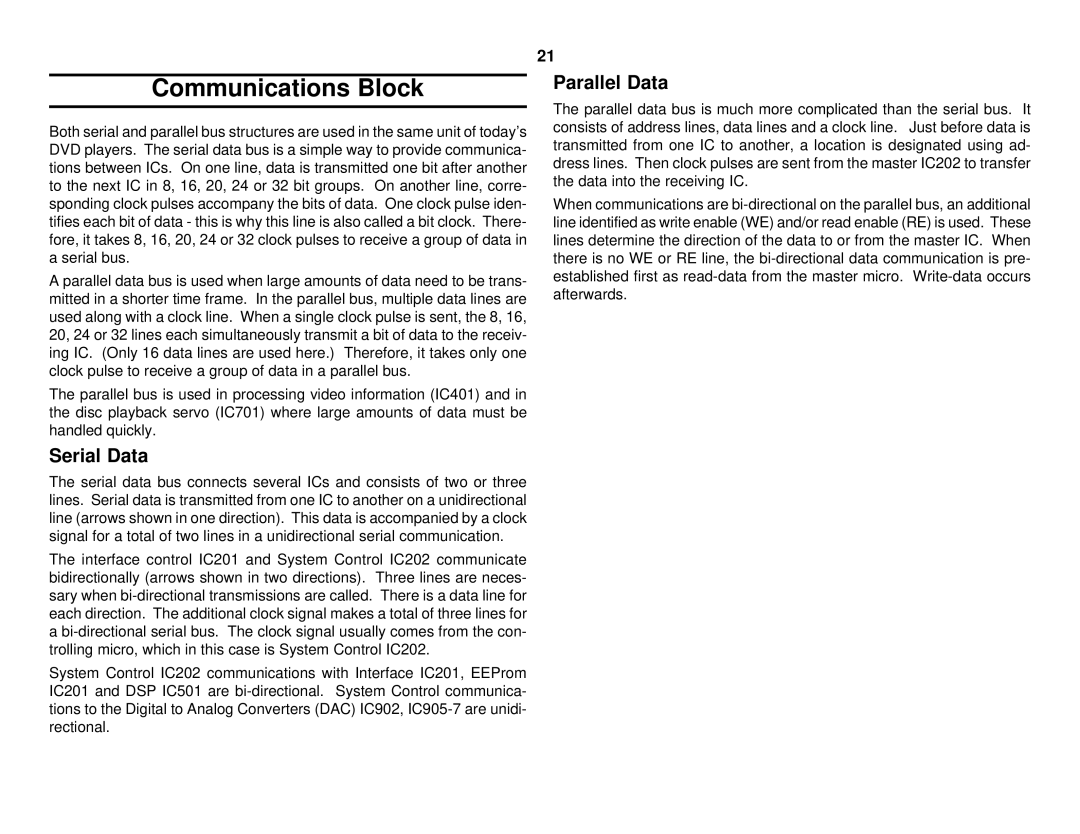Communications Block
21
Parallel Data
Both serial and parallel bus structures are used in the same unit of today’s DVD players. The serial data bus is a simple way to provide communica- tions between ICs. On one line, data is transmitted one bit after another to the next IC in 8, 16, 20, 24 or 32 bit groups. On another line, corre- sponding clock pulses accompany the bits of data. One clock pulse iden- tifies each bit of data - this is why this line is also called a bit clock. There- fore, it takes 8, 16, 20, 24 or 32 clock pulses to receive a group of data in a serial bus.
A parallel data bus is used when large amounts of data need to be trans- mitted in a shorter time frame. In the parallel bus, multiple data lines are used along with a clock line. When a single clock pulse is sent, the 8, 16, 20, 24 or 32 lines each simultaneously transmit a bit of data to the receiv- ing IC. (Only 16 data lines are used here.) Therefore, it takes only one clock pulse to receive a group of data in a parallel bus.
The parallel bus is used in processing video information (IC401) and in the disc playback servo (IC701) where large amounts of data must be handled quickly.
Serial Data
The serial data bus connects several ICs and consists of two or three lines. Serial data is transmitted from one IC to another on a unidirectional line (arrows shown in one direction). This data is accompanied by a clock signal for a total of two lines in a unidirectional serial communication.
The interface control IC201 and System Control IC202 communicate bidirectionally (arrows shown in two directions). Three lines are neces- sary when
System Control IC202 communications with Interface IC201, EEProm IC201 and DSP IC501 are
The parallel data bus is much more complicated than the serial bus. It consists of address lines, data lines and a clock line. Just before data is transmitted from one IC to another, a location is designated using ad- dress lines. Then clock pulses are sent from the master IC202 to transfer the data into the receiving IC.
When communications are
